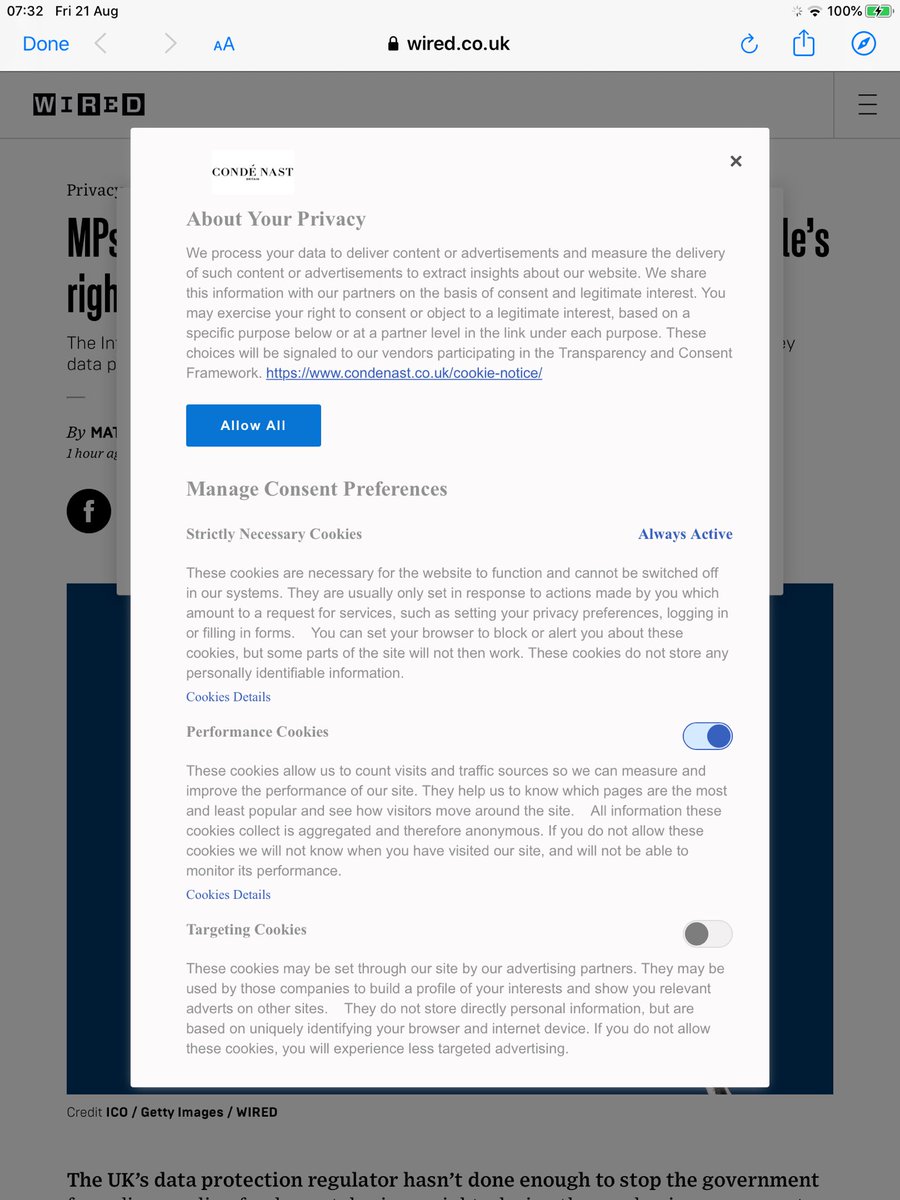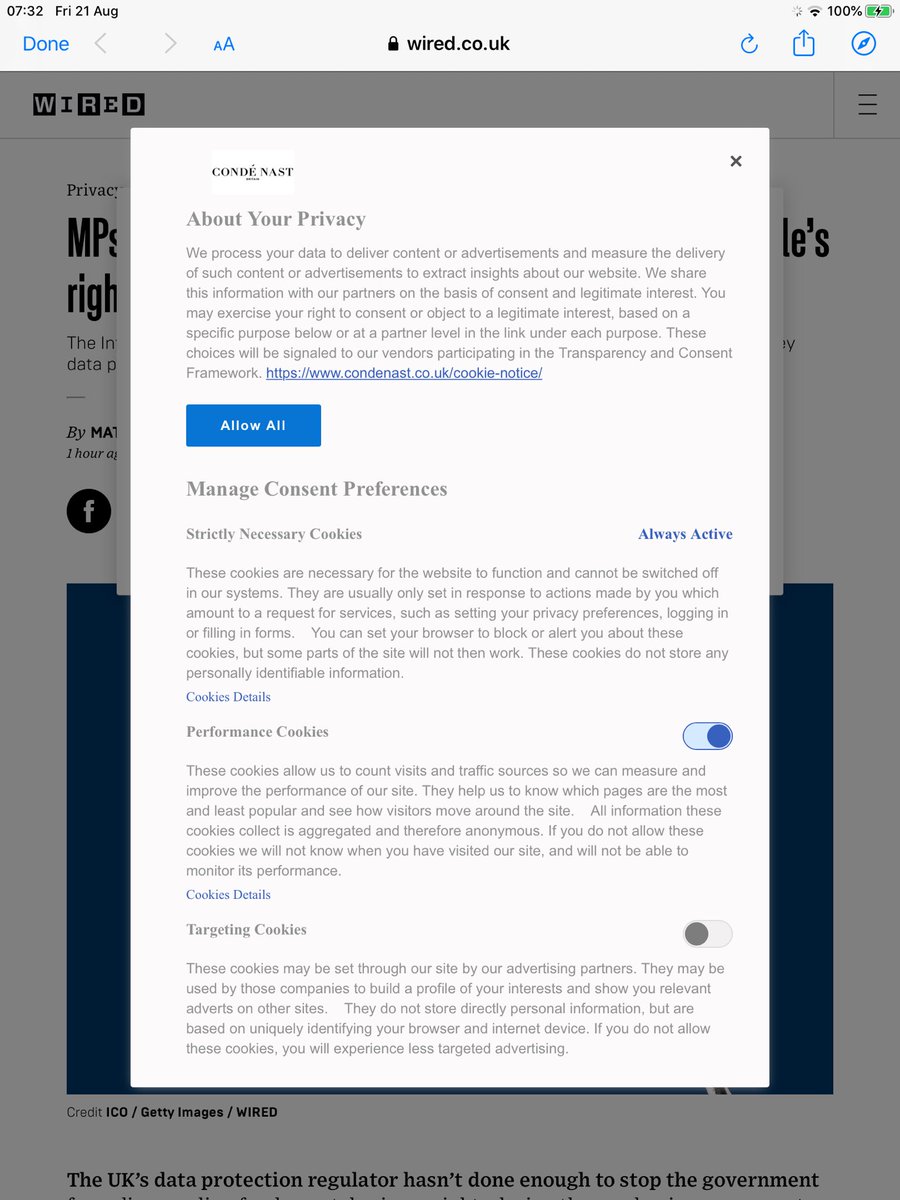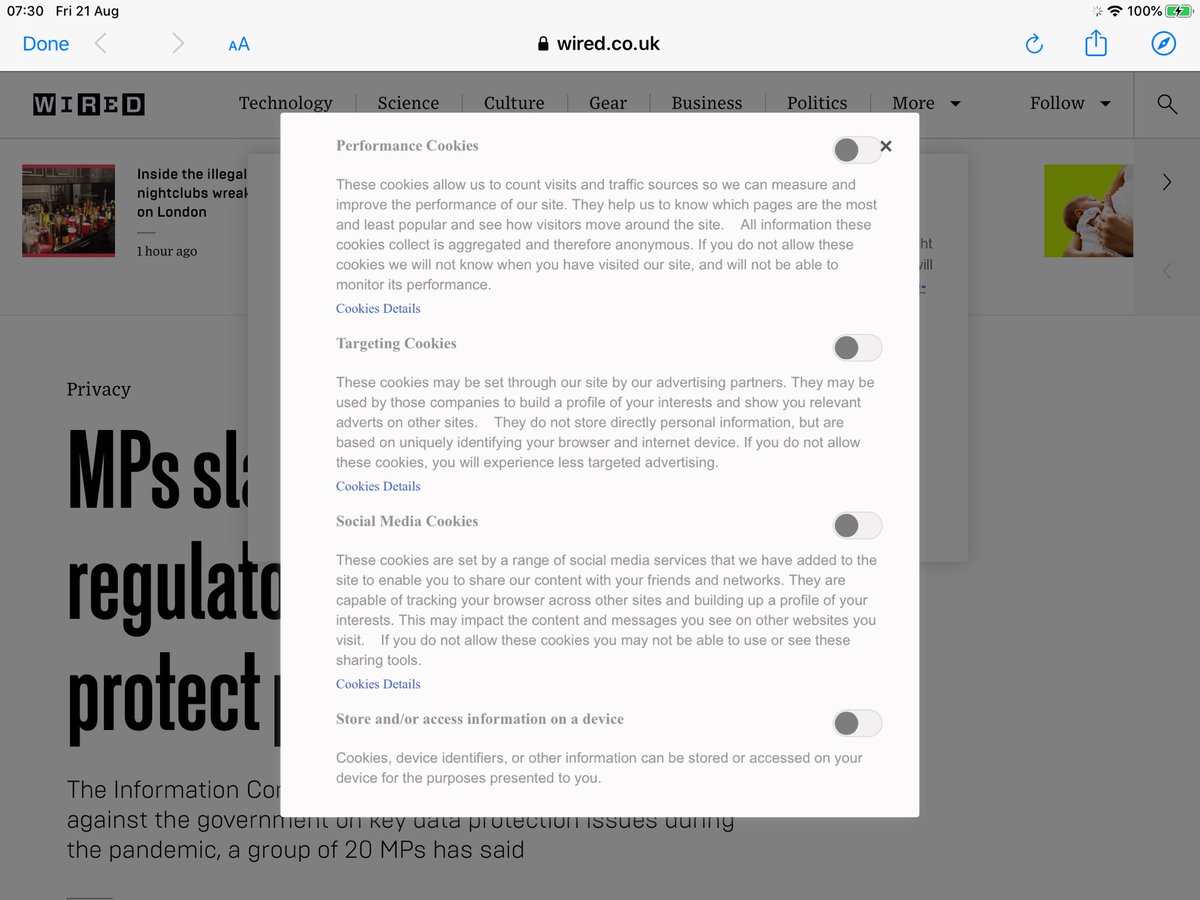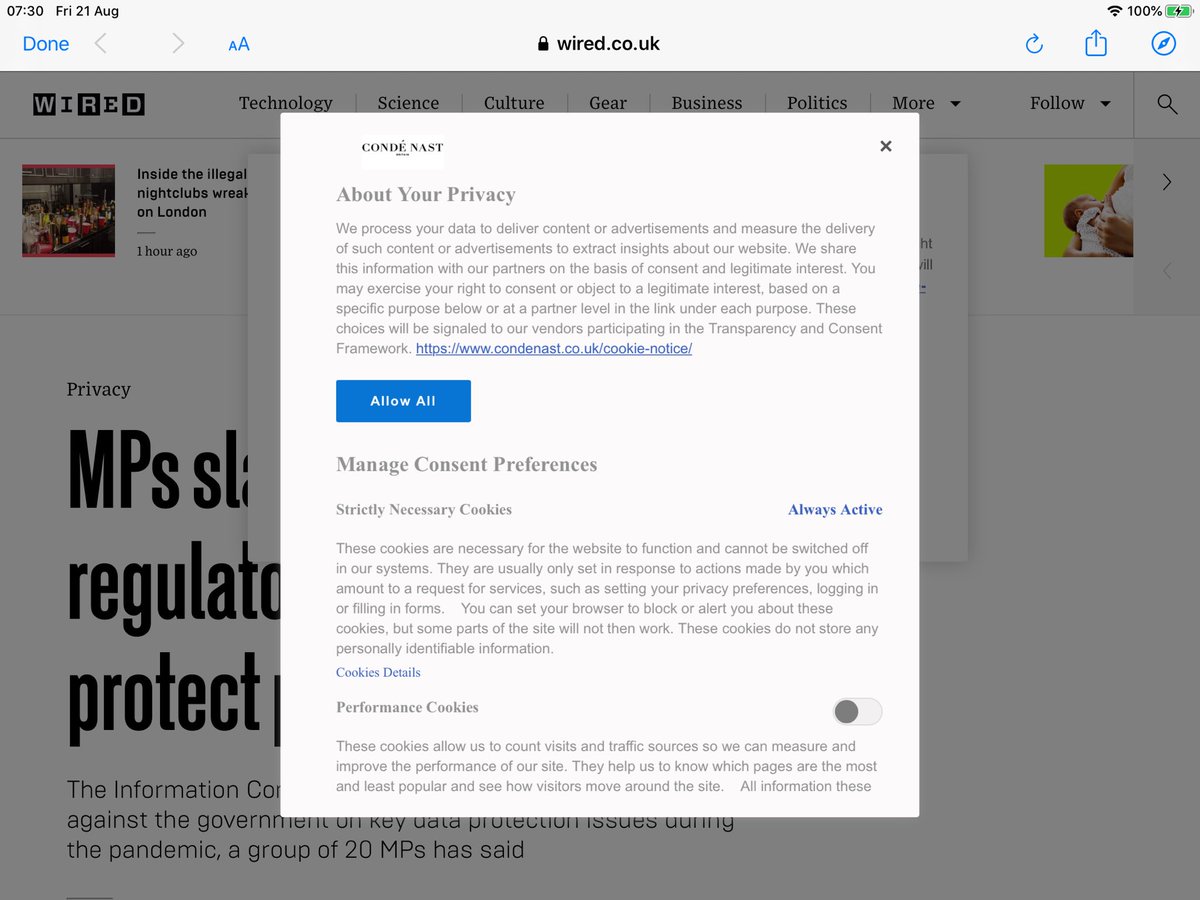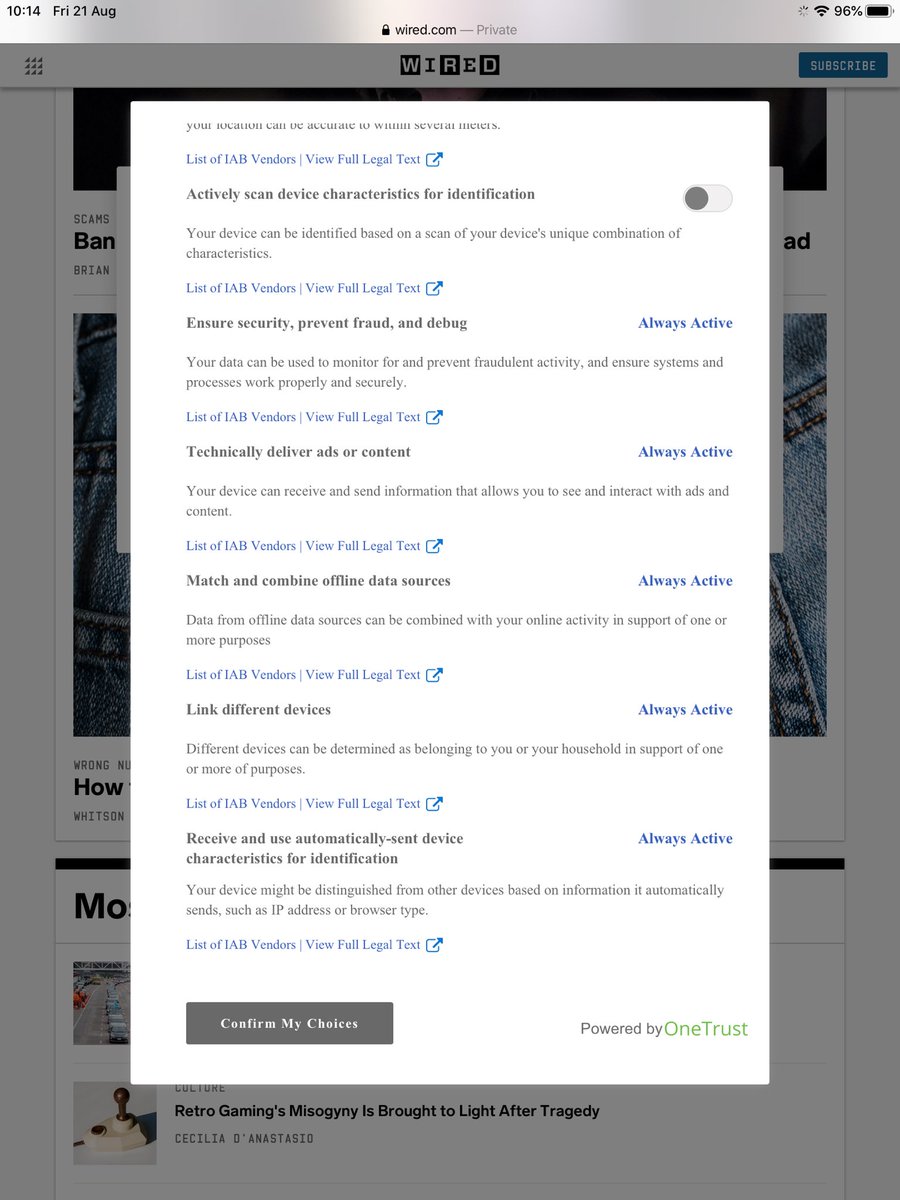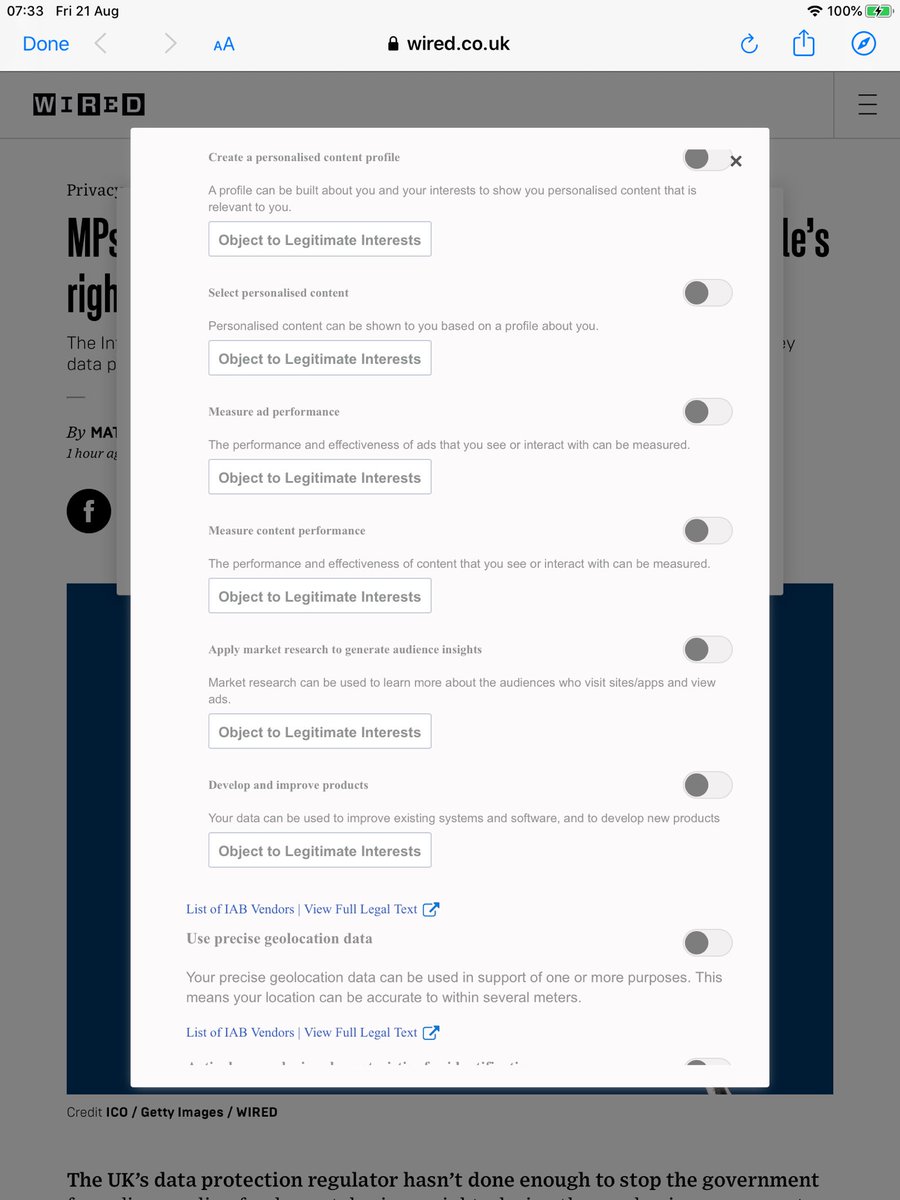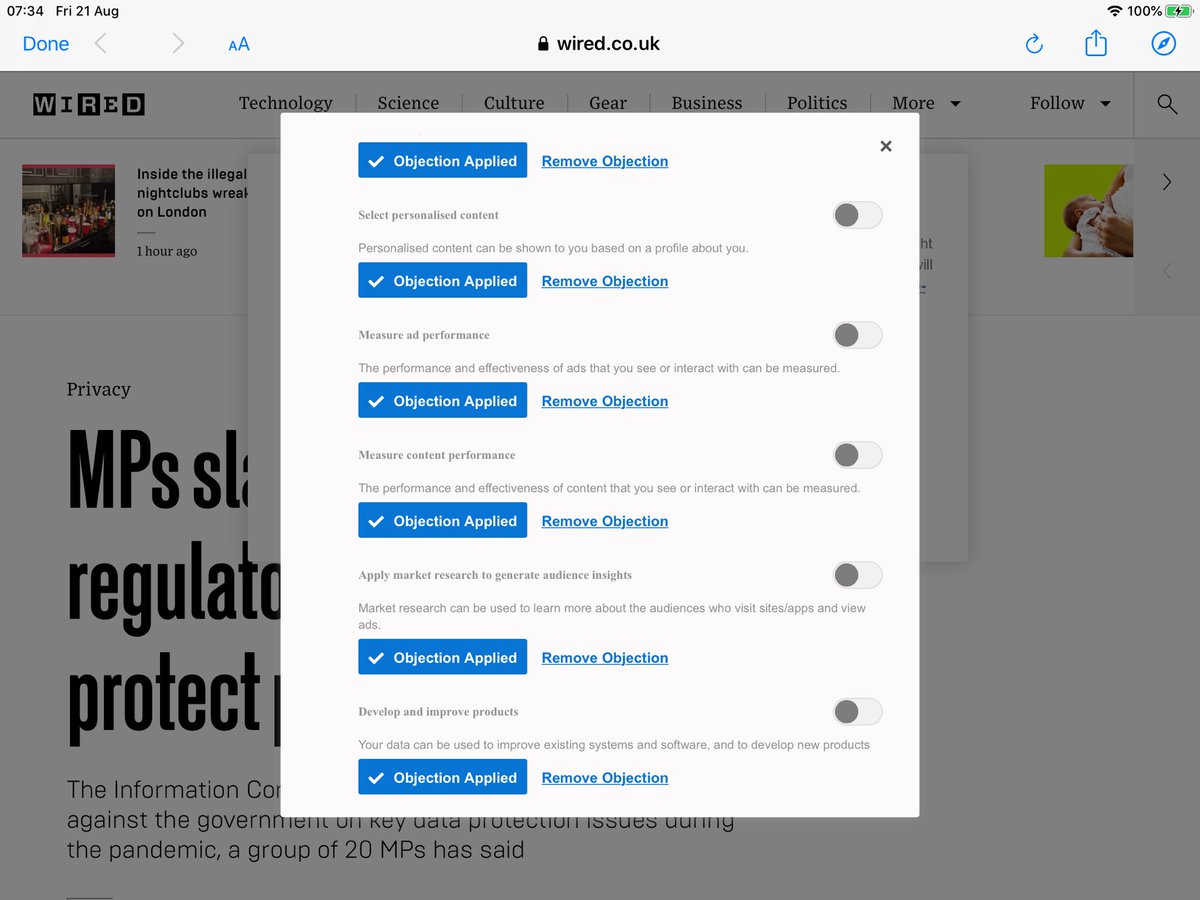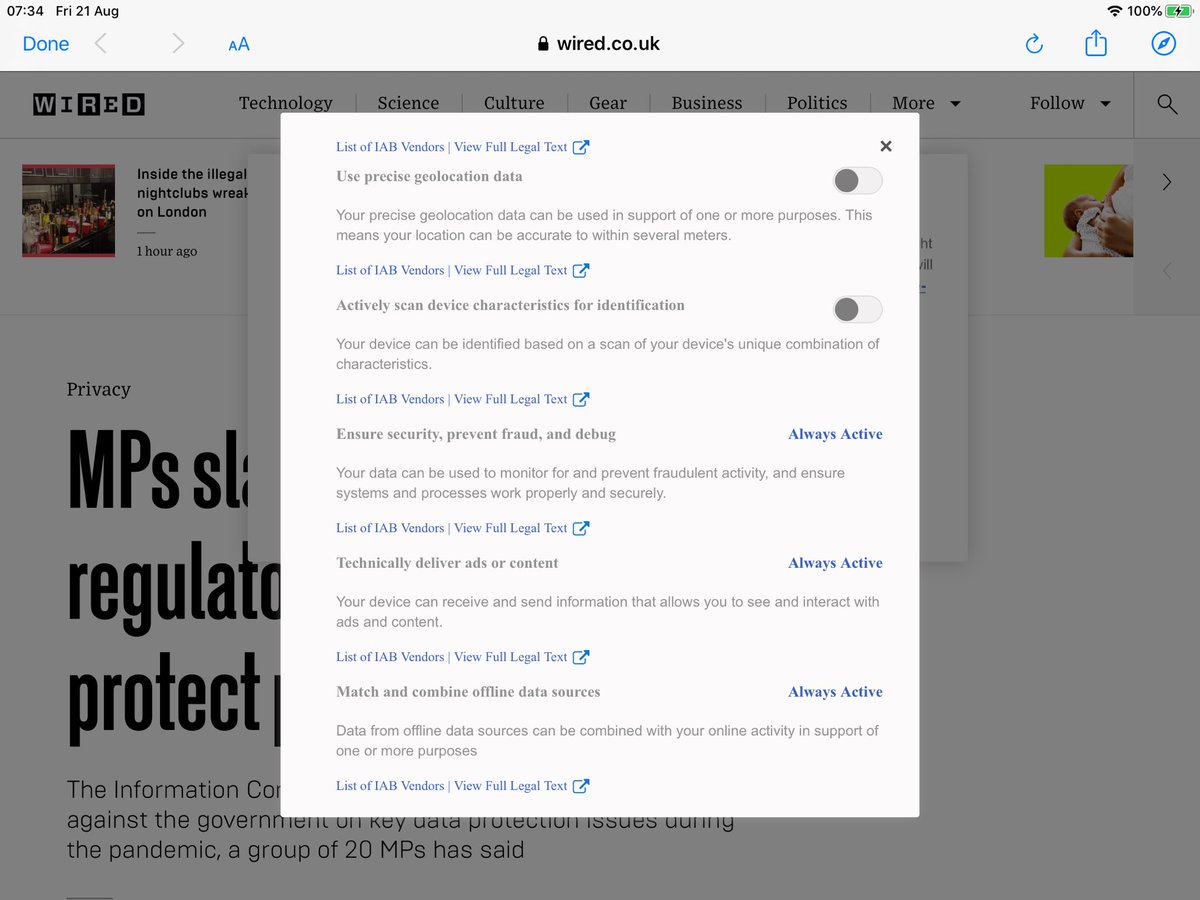It IS a problem, @ICOnews and other DPAs not doing their job.
(A thread)
wired.co.uk/article/ico-da…
But actually, lets try tapping on the “Object to legitimate interests” box itself and see what happens.
We also see this “cosying up” process with @DPCIreland , which - even after two CJEU decisions - is still reluctant to take on Facebook.noyb.eu/en/dpc-has-no-…
But the buck ultimately stops with the regulator.

